WHAT HAPPENED IN AUSTRALIA ON THIS DATE 19 JUNE.
June 19 is the 170th day of the year (171st in leap years) in the Gregorian calendar. 195 days remain until the end of the year.
World Sickle Cell Day (International)
EVENTS:
1884: SOUTH AUSTRALIAN PROTECTION
..The steel twin-screw gunboat Protector was commissioned. Protector was laid down in Armstrong, Mitchell & Co., Elswick, Newcastle Upon Tyne, England, for service with the South Australian Government. Heavily armed for her size Protector was practically a small cruiser.
..HMCS (later HMAS) Protector was a large flat-iron gunboat commissioned and purchased by the South Australian government in 1884, for the purpose of defending the local coastline against possible attacks in the aftermath of the 'Russian scare', of the 1870s. She arrived in Adelaide in September 1884 and subsequently served in the Boxer Rebellion, World War I and World War II.
..During July 1943, Protector was requisitioned for war service by the U.S. Army. On the way to New Guinea and off Gladstone, she was damaged in a collision with a tug and abandoned. The hull was subsequently taken to Heron Island off the Queensland coast and later sunk for use as a breakwater. Her rusting remains are still visible to this day.
https://www.navyhistory.org.au/the-story-of-hmcs-protector/
http://www.navy.gov.au/hmas-protector-i
.
1941: 19 JUNE - 6 JULY; LIEUTENANT A.R. CUTLER, VC
..Lieutenant Roden Cutler, 2/5th Field Regiment, 7th Division, originally of Manly, New South Wales, wins the Victoria Cross for a series of actions at Merdjayoun and in the Damour area, Lebanon.
..Arthur Roden Cutler was born on 24 May 1916. His cousin, Sir Charles Cutler, was Deputy Premier of New South Wales from 1965 to 1975. Arthur grew up in the Sydney Harbour suburb of Manly where he attended the Manly Village Public School. At the age of 15 he enrolled at Sydney Boys High School. After school, he worked for the Texas Company Australasia, which later became Texaco. He studied economics during the night at the University of Sydney and joined the Sydney University Regiment in 1936.
..On 10 November 1939, he was commissioned as a lieutenant in the Sydney University Regiment. He enjoyed all sports, especially riding, rifle shooting and water polo, and was awarded a University Blue in swimming. As an 18-year-old lifesaver, he swam to the aid of a surfer who was being circled by a large shark. The shark brushed him twice as he helped the surfer to the beach.
..In May 1940, he volunteered for overseas service with the Second Australian Imperial Force, receiving a commission in the 2/5th Field Regiment, Royal Australian Artillery, 7th Division.
..In 1941, Cutler served with the 2/5th in the Syria-Lebanon Campaign. During the period between 19 June and 6 July, in the Merdjayoun-Damour area of Syria, and as part of the Battle of Merdjayoun, Lieutenant Cutler's exploits included repairing a telephone line under heavy fire, repulsing enemy tank attacks, setting up an outpost to bring fire to a road used by the enemy and, with a 25-pound field gun, demolishing a post threatening the Australian advance. Later, during the Battle of Damour, he was seriously wounded and when rescued 26 hours later his leg had to be amputated. Cutler received the Victoria Cross for his actions in the Merdjayoun-Damour area, and was medically discharged in 1942.
.
VC CITATION
War Office, 28 November 1941.
The KING has been graciously pleased to approve the award of the VICTORIA CROSS to the under-mentioned:
Lieutenant Arthur Roden Cutler (NX.12378), Australian Military Forces.
For most conspicuous and sustained gallantry during the Syrian Campaign and for outstanding bravery during the bitter fighting at Merdjayoun when this artillery officer became a byword amongst the forward troops with whom he worked.
At Merdjayoun on the 19 June 1941 our infantry attack was checked after suffering heavy casualties from an enemy counter attack with tanks. Enemy machine gun fire swept the ground but Lieutenant Cutler with another artillery officer and a small party pushed on ahead of the infantry and established an outpost in a house. The telephone line was cut and he went out and mended this line under machine gun fire and returned to the house, from which enemy posts and a battery were successfully engaged.
The enemy then attacked this outpost with infantry and tanks, killing the Bren gunner and mortally wounding the other officer. Lieutenant Cutler and another manned the anti-tank rifle and Bren gun and fought back driving the enemy infantry away. The tanks continued the attack, but under constant fire from the anti-tank rifle and Bren gun eventually withdrew. Lieutenant Cutler then personally supervised the evacuation of the wounded members of his party.
Undaunted he pressed for a further advance. He had been ordered to establish an outpost from which he could register the only road by which the enemy transport could enter the town. With a small party of volunteers he pressed on until finally with one other he succeeded in establishing an outpost right in the town, which was occupied by the Foreign Legion, despite enemy machine gun fire which prevented our infantry from advancing.
At this time Lieutenant Cutler knew the enemy were massing on his left for a counter attack and that he was in danger of being cut off.
Nevertheless he carried out his task of registering the battery on the road and engaging enemy posts. The enemy counter attacked with infantry and tanks and he was cut off. He was forced to go to ground, but after dark succeeded in making his way through the enemy lines. His work in registering the only road by which enemy transport could enter the town was of vital importance and a big factor in the enemy's subsequent retreat.
On the night of the 23rd-24 June he was in charge of a 25-pounder sent forward into our forward defended localities to silence an enemy anti-tank gun and post which had held up our attack. This he did and next morning the recapture of Merdjayoun was completed.
Later at Damour on 6 July when our forward infantry were pinned to the ground by heavy hostile machine gun fire Lieutenant Cutler, regardless of all danger, went to bring a line to his outpost when he was seriously wounded. Twenty-six hours elapsed before it was possible to rescue this officer, whose wound by this time had become septic necessitating the amputation of his leg.
Throughout the Campaign this officer's courage was unparalleled and his work was a big factor in the recapture of Merdjayoun.
..Following the war, Cutler began a long career in the Australian diplomatic service. At the age of 29 he was appointed High Commissioner to New Zealand (1946-52). Other postings within the Commonwealth followed; he served in Ceylon (now Sri Lanka) (1952-55) and was the Australian Minister in Egypt during the Suez Crisis in 1956. As a result of his service in Egypt, Cutler was appointed Commander of the Order of the British Empire (CBE) in the 1957 New Years Honours.
..Cutler acted as Secretary-General of the South-East Asia Council of Ministers meeting in Canberra in January 1957 and became Chief of Protocol of the Department of External Affairs (1957-58). Cutler was also State President of the Returned Services League in 1958.
He was Australian High Commissioner in Pakistan, (1958-61), and Australian Consul-General in New York, (1961-65), during which period he was the Australian delegate to the United Nations General Assembly in 1962, 1963 and 1964 and was the Australian Representative to independence of the Republic of Somalia in 1960.
..For his diplomatic services to Australia, he was honoured by The Queen as a Knight Commander of the Order of St Michael and St George (KCMG) in December 1965. He was further honoured as a Knight Commander of the Royal Victorian Order (KCVO) in 1970. He was appointed a Knight of the Order of Australia (AK) in 1981.
..His final diplomatic posting, in 1965, as Ambassador to the Netherlands, was cut short in 1966 when he returned home as Governor of New South Wales, an office he served for a record 15 years, through four Premiers, and a change of government after eleven years of conservative rule. Such was his popularity that the Labor Premier, Neville Wran, extended his last term until 1981.
..As the longest-serving state governor, Cutler occasionally acted as Administrator of the Commonwealth of Australia in the absence of the Governor-General. He acted as Administrator during Sir John Kerr's term from 20 February: 13 March 1975, 12-24 May 1975, 16-17 September 1975, 23 December 1975: 3 February 1976, 26 April: 14 June 1977 and finally 23-28 August 1977.
,,Following the end of his term as governor, Cutler was given various chairmanships and business appointments, including as chairman of Ansett Express (1981-92) and the State Bank of New South Wales (1981-86). Throughout the republican debate and referendum he remained a staunch monarchist and proud Australian, believing the monarchy brought stability, continuity and tradition to his country.
..Cutler died on 22 February 2002 following a long illness. He was accorded the rare honour of a State Funeral on 28 February 2002 by the New South Wales Government.
.. His VC is now held by the AWM
https://www.awm.gov.au/collection/P10676274
https://www.dailytelegraph.com.au/news/vc-hero-roden-cutler-was-six-feet-five-of-sheer-courage/news-story/4e301e8977d2375f4e7ec649e4d7ffd4
1952: JAMESTOWN LINE, KOREA
..The 1st Battalion, Royal Australian Regiment, relieved the 1st Battalion, the Leicestershire Regiment, on the Jamestown line, Korea.
..The Jamestown Line was a series of defensive positions occupied by United Nations forces in the Korean War. Following the end of the 1951 Chinese Spring Offensive the war largely became one of attrition and trench warfare, fought along static defensive lines reminiscent of the First World War.
As a consequence major UN ground operations from late spring, under the direction of Lieutenant General Matthew Ridgway, were primarily conducted to recapture or establish durable defensive lines, including the Wyoming, Missouri, Kansas and Jamestown Lines. The Jamestown Line stretched from the Imjin River near Munsan-ni then arched northeast 35 miles (56 km) in the strategically important sector of front from the Kimpo peninsula on the Yellow Sea coast to a point east of Kumhwa.
The line was subsequently established during the UN counter-offensive between May and November 1951, just north of the 38th parallel during Operation Commando (1951). Held by the US I Corps, this sector was just 30 miles (48 km) from the South Korean capital, Seoul. Five UN divisions of I Corps were used in its capture, including the US 1st Cavalry Division, the US 3rd and 25th Infantry Divisions, the South Korean 1st Division, and the 1st Commonwealth Division. The Jamestown line was fought over almost continuously until the armistice on 27 July 1953; due to its strategic position it was the scene of much heavy fighting, including the Battle of the Samichon River just hours before the Armistice Agreement which ended the war.
https://www.awm.gov.au/collection/042315
https://www.awm.gov.au/collection/U52111
https://en.wikipedia.org/wiki/1st_Battalion,_Royal_Australian_Regiment
1987: KILLER TOURIST SHOT
..Police shoot dead German tourist Joseph Schwab, suspected of killing five people in Australia's Northern Territory.
..Joseph Josef Schwab was a German tourist and spree killer who murdered five people in the Top End region of the Northern Territory and Western Australia in June 1987. Schwab was dubbed The Kimberley Killer by the Australian press after the region in which he committed the murders.
The gunman's first victims were a father and son, who were shot dead with a high-powered rifle on June 9, while scouting for a fishing location on the banks of the Victoria River, and their bodies later found in shallow graves. Police investigations failed to uncover any motive for the killings and roadblocks were set up across the area, but the killer escaped capture.
Just five days later three more tourists were shot dead in similar circumstances at the Pentecost River Crossing near Wyndham, Western Australia. Schwab drove their vehicle away from the scene and then set it on fire. A seven-member team of police officers from the Tactical Response Group and an officer from the forensic division were sent by chartered aircraft from Perth to Kununurra to assist Kimberley police with the investigation. It was believed that the weapon used in the murders was a Ruger Mini-14 .223 semi-automatic rifle and that Schwab was driving a white Toyota 4Runner with conspicuous red side stripes.
An outback helicopter pilot from Napier Downs station, raised the alarm after spotting a camouflaged vehicle in bushland near Fitzroy Crossing. Police, unsure if the hidden vehicle belonged to the gunman they were looking for, approached it cautiously and decided to call on a police aircraft to fly over the site in an attempt to flush the occupant out into the open. A man armed with a semi-automatic weapon emerged from the bushes and fired at the police and the Cessna 182 police plane. Police returned fire, killing the gunman.
..Police later identified the gunman as Joseph Schwab, a 26-year-old German tourist. A security guard in his native country, his motive for the killings is unknown.
http://murderpedia.org/male.S/s/schwab-joseph.htm
https://thewest.com.au/news/wa/josef-schwab-murder-spree-30-years-on-on-the-trail-of-a-killer-in-was-remote-north-ng-b88502609z
BIRTHS:
b.1797: Hamilton Hume, Australian explorer (d. 1873) (Ernest Favenc) http://adb.anu.edu.au/biography/hume-hamilton-2211
b.1851: Billy Midwinter, English-Australian cricketer 12 Tests (d. 1890) (Wikipedia Author Unknown) http://www.espncricinfo.com/australia/content/player/6605.html
b.1859: Ethel Pedley, English-Australian author and musician. (d. 1898) (Hordern House Rare Books, Sydney) https://adb.anu.edu.au/biography/pedley-ethel-charlotte-8010
b.1879: James Auld. Australian artist. (d. 1942) (Self-portrait, Art Gallery NSW) http://adb.anu.edu.au/biography/auld-james-muir-5082
b.1885: Adela Pankhurst Walsh, British-Australian suffragette, (d. 1961) (Google Arts & Culture) http://adb.anu.edu.au/biography/pankhurst-adela-constantia-9275
b.1893: Napier Waller CMG OBE, Australian painter (d. 1972) (AWM) https://www.portrait.gov.au/people/napier-waller-1893
b.1895: Adrian Cole, CBE, DSO, MC, DFC, Royal Australian Air Force (RAAF) Air Vice Marshal (Mj. Gen) (d. 1966) (Ranker) https://adb.anu.edu.au/biography/cole-adrian-lindley-trevor-9780
b.1920: Robert Klippel AO, Australian sculptor and teacher. (d. 2001) (The Culture Concept Circle) https://www.portrait.gov.au/portraits/1998.16/robert-klippel
b.1921: Patricia Wrightson, Australian author (d, 2010) (Penguin Books) https://www.abc.net.au/local/stories/2010/03/25/2855942.htm
b.1923: Bob Hank, Australian rules footballer and coach, AFL HoF (d. 2012) (ABC Au) https://australianfootball.com/players/player/bob+hank/79
b.1934: George Whaley, Australian actor, director and writer (d. 2019) (IF Magazine) https://if.com.au/vale-george-whaley-esteemed-director-actor-and-teacher/
b.1938: Ian Smith, Australian actor and screenwriter (prisonercellblockh wikia) https://www.imdb.com/name/nm0808500/bio/
b.1952: Virginia Hey, Australian actress (FanPix) https://www.imdb.com/name/nm0382162/bio
b.1968: Howard Wiseman, Australian theoretical quantum physicist (Wiseman Collection) http://www.ict.griffith.edu.au/wiseman/
b.1968: Tiki Tsang, Australian actress and model. (Alchetron) https://en.wikipedia.org/wiki/Tiki_Tsang
b.1970: Claire Mitchell-Taverner', Australian field hockey player, (geelongcats) https://www.olympics.com.au/olympians/claire-mitchell-taverner/
b.1972: Poppy Montgomery, Australian-American actress (articlebio) https://www.thefamouspeople.com/profiles/poppy-montgomery-12352.php
b.1981: Robin McLeavy, Australian actress (Heightline) https://superstarsbio.com/bios/robin-mcleavy/
b.1981: Laurina Fleure, Australian model and television personality. (IMDb), https://www.newidea.com.au/laurina-fleure-20-things-you-didn-t-know-about-laurina
b.1982: Chris Vermuelen, motorcycle racer (University of the Sunshine Coast) https://www.motorcyclenews.com/sport/motogp/2018/november/chris-vermeulen-motogp-interview/
b.1984: Jodie Fields (n. Purves), Australian cricket player 4 Tests, 67 ODI, 37 T20I (F Magazine) https://www.governanceinstitute.com.au/resources/governance-directions/volume-72-number-7/a-new-baseline-for-sports-jodie-fields-former-captain-of-the-australian-women-s-cricket-team/
b.1986: Leena Khamis, Australian soccer player 25 caps* (footballdatabase) https://en.wikipedia.org/wiki/Leena_Khamis
b.1994: Brittany Elmslie, Australian swimmer. (Swimart) https://www.olympics.com.au/olympians/brittany-elmslie/
DEATHS:
d.1820: [Sir] Joseph Banks, English natural historian (Cook/Australia) (b.1743) (Natural History Museum UK) http://adb.anu.edu.au/biography/banks-sir-joseph-1737
d.2001: Ron Casey AM MBE, Australian rules football administrator, commentator and television pioneer (b. 1927) (LEGENDS) https://icelegendsaustralia.com/legends-2/bio_casey.html
d.2001: John Heyer, Australian documentary filmmaker (b.1916) (Daily Telegraph Au) https://www.dailytelegraph.com.au/news/filmmaker-john-heyer-went-to-the-back-of-beyond-to-put-real-australia-on-the-world-screen/news-story/5a08aece8a11d33ea300cecb455d1450
WEDDINGS:
m.2006: "Lost" actress Emilie de Ravin (24) weds actor Josh Janowicz (24) in Melbourne, Australia (Daily Mail Au)
ADDENDUM: with thanks to Wikipedia
325: The original Nicene Creed was presented at the First Council of Nicaea.
1269: King Louis IX of France orders all Jews found in public without an identifying yellow badge to be fined ten livres of silver.
1306: The Earl of Pembroke's army defeats Bruce's Scottish army at the Battle of Methven.
1816: Battle of Seven Oaks between North West Company and Hudson's Bay Company, near Winnipeg, Manitoba, Canada.
1865: Over two years after the Emancipation Proclamation, slaves in Galveston, Texas, United States, are finally informed of their freedom. The anniversary is still officially celebrated in Texas and 41 other contiguous states as Juneteenth.
1867: Maximilian I of the Second Mexican Empire is executed by a firing squad in Querétaro, Mexico
1910: The first Father's Day is celebrated in Spokane, Washington.
1917: During World War I, King George V orders the British royal family to dispense with German titles and surnames and the family takes the name Windsor.
1944: World War II: First day of the Battle of the Philippine Sea.
1961: Kuwait declares independence from the United Kingdom.
1978: Garfield, the sardonic comic strip cat, debuts in print.
1990: The Communist Party of the Russian Soviet Federative Socialist Republic is founded in Moscow.
1991: The Soviet occupation of Hungary ends.
2012: WikiLeaks founder Julian Assange requested asylum in London's Ecuadorian Embassy for fear of extradition to the US after publication of previously classified documents including footage of civilian killings by the US army.
2018: Antwon Rose II was fatally shot in East Pittsburgh by East Pittsburgh Police Officer Michael Rosfeld after being involved in a near-fatal drive-by shooting.
NOTE:- IMAGES MAY BE SUBJECT TO COPYWRITE








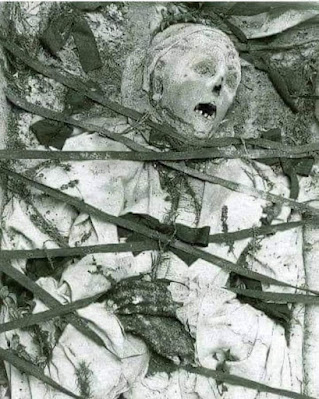
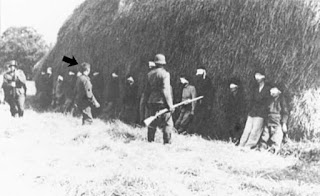

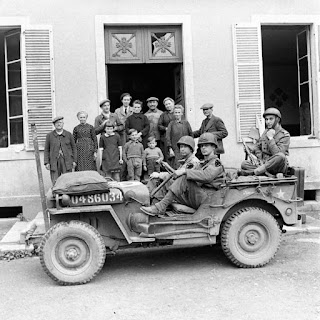




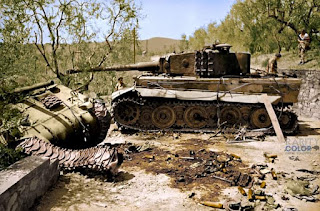
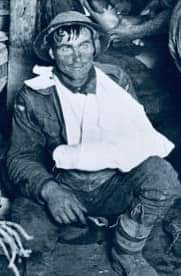
Comments
Post a Comment